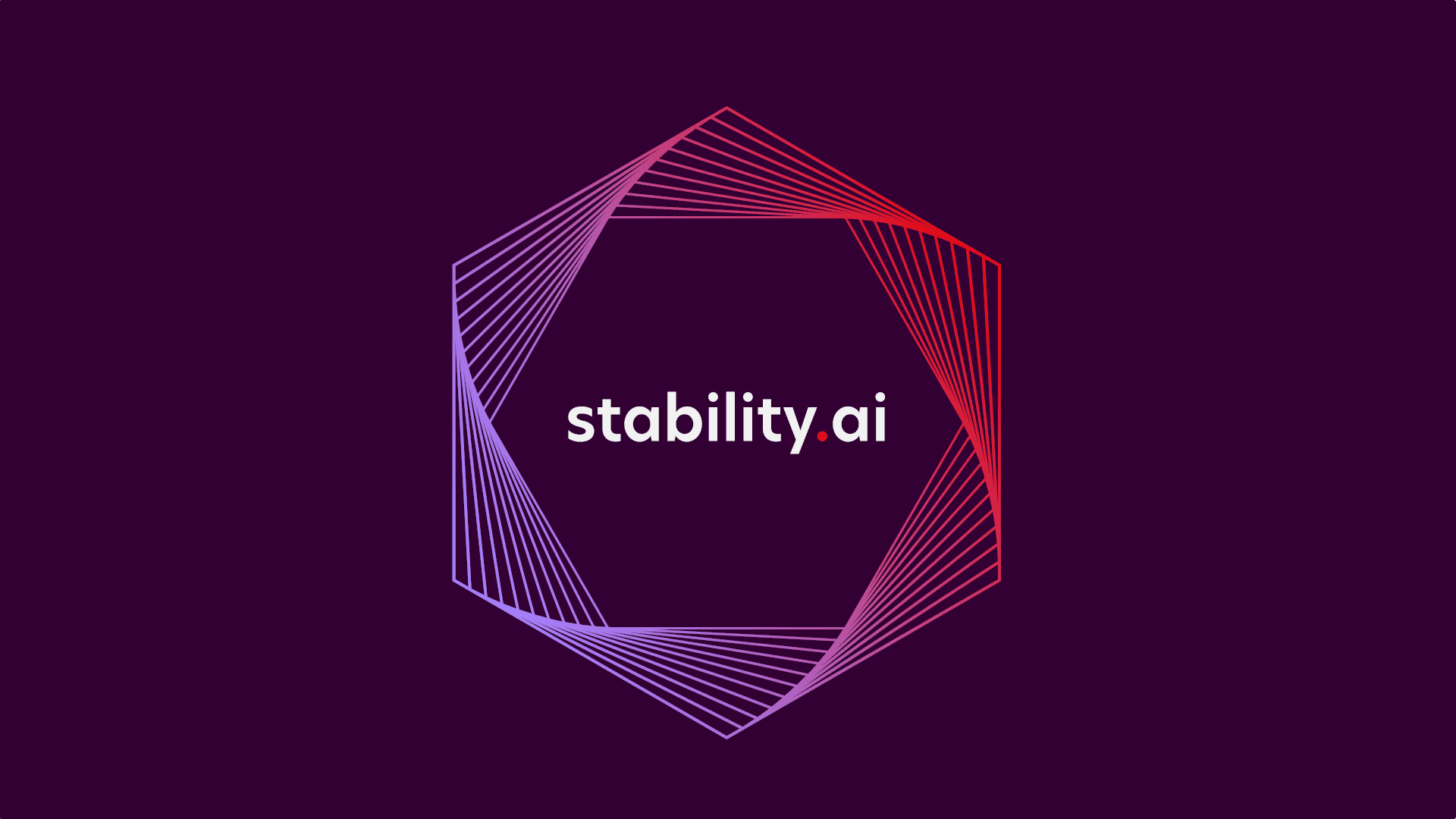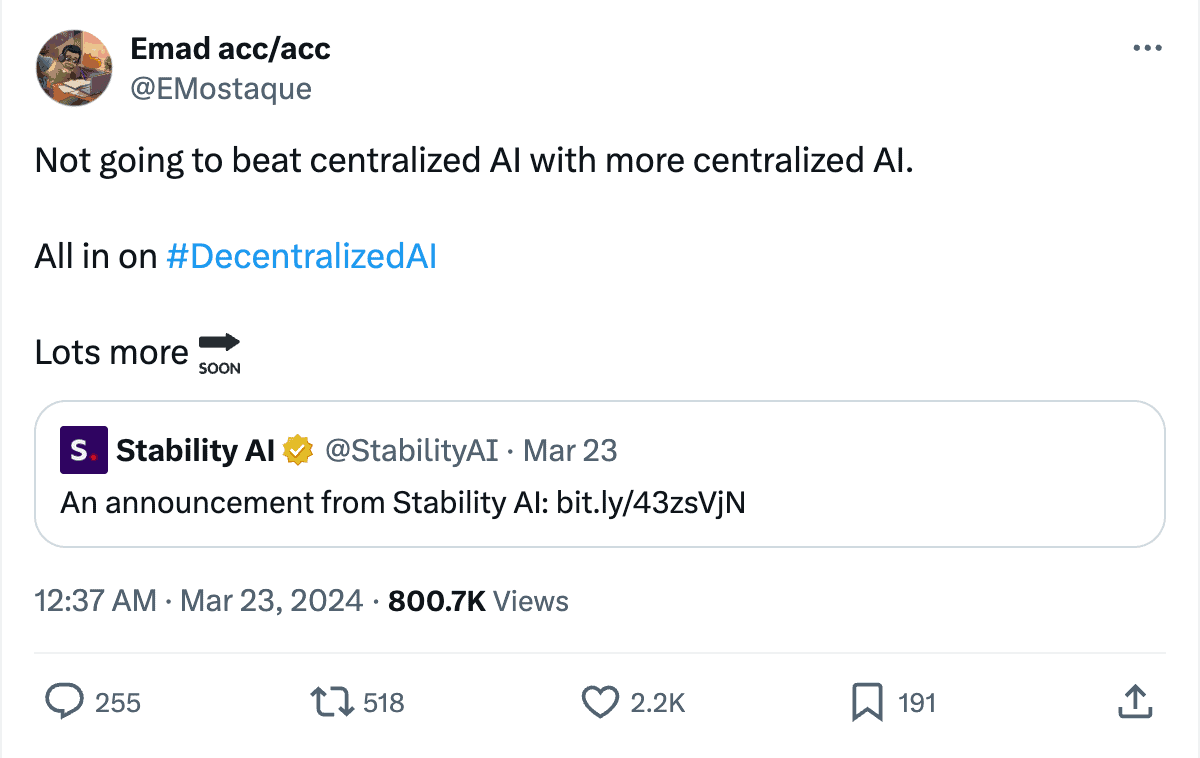How the Stability AI CEO Set a Once Promising Startup on Fire
Few AI companies have risen as meteorically or fallen as spectacularly as Stability AI. Founded in 2019 by Emad Mostaque, the startup behind the wildly popular Stable Diffusion image generator seemed poised to revolutionize the AI landscape and ensure AI remains open and accessible. However, behind the buzz and billion-dollar valuation, trouble was brewing.
Stability AI’s CEO, Emad Mostaque, set the company on fire through a series of poor business decisions, wild overspending, and an inability to translate the startup’s early success into a sustainable business model. As a result, the once-promising AI startup found itself grappling with financial troubles, investor discontent, and a wave of key employee departures, ultimately leading to Mostaque’s resignation and a cautionary tale for the AI industry.
In this blog post, we’ll dive deep into the rise and fall of Stability AI, examining how Mostaque’s actions and leadership style contributed to the company’s downfall. We’ll explore the lessons that can be learned from Stability AI’s story and discuss the importance of strong financial management, realistic goals, and adaptable strategies in the rapidly evolving world of AI startups. By understanding the missteps that led to Stability AI’s current predicament, aspiring entrepreneurs, investors, and AI enthusiasts can gain valuable insights into navigating the challenges of building and scaling an AI company while avoiding the pitfalls that can set a startup on fire.
- Background on Stability AI
- Mostaque’s First Mistake: Making Promises He Couldn’t Keep
- Mostaque’s Second Mistake: Burning Through Its Cash and Expensive Computing Power
- Mostaque’s Third Mistake: Not Listening to Investors
- Mass Exodus: Key Employee Departures and Desperate Measures
- Mostaque’s Resignation and the Aftermath
- Lessons to Take Away from Stability AI’s Crash and Burn
Background on Stability AI
Following its entrance on the center stage, Stability AI quickly gained attention for its mission to democratize AI and challenge the dominance of centralized AI giants. Mostaque, a charismatic entrepreneur with a background in finance and technology, set out to create a company that could make AI more accessible and transparent.
The company’s breakthrough moment came with the release of Stable Diffusion, a powerful open-source image generation model. By allowing users to create highly detailed and customizable images using simple text descriptions, Stable Diffusion showcased the potential of decentralized AI and attracted a large community of developers and creators. The model’s success helped Stability AI secure $100 million in funding at a $1 billion valuation in 2022, cementing its status as a rising star in the AI industry.
However, as Stability AI’s mission grew, cracks began to appear in its foundation. Mostaque’s leadership style and decision-making would come under scrutiny as the company grappled with financial challenges and internal turmoil.

Mostaque’s First Mistake: Making Promises He Couldn’t Keep
At the helm of Stability AI, Emad Mostaque was known for his ambitious vision and bold promises. He frequently spoke about the company’s potential to revolutionize various industries and even transform entire nations through the power of AI. Mostaque even envisioned a future where Stability AI would develop customized AI models for governments, enabling them to tackle complex challenges and drive economic growth.
To pursue this grand vision, Mostaque invested heavily in research and development, assembling a team of top AI talent and providing them with extensive resources. However, this aggressive spending was not balanced by a clear strategy for generating sustainable revenue. Instead, Mostaque appeared to rely on the assumption that the transformative potential of Stability AI’s technology would continue to attract investment and eventually lead to profitability.
As Stability AI gained prominence, Mostaque’s claims about the capabilities of the company’s AI products grew increasingly bold. He suggested that their models could solve problems across a wide range of domains, from healthcare to education, and even hinted at their potential to extend human lifespans. While these statements generated excitement and media attention, they also set high expectations that the company would struggle to meet.
Mostaque’s grand vision and promises played a significant role in Stability AI’s rapid growth, but they also contributed to the challenges the company would face. As the startup’s financial position became more precarious, it became clear that Mostaque’s ambitions had outpaced the company’s ability to deliver on its promises and generate sustainable revenue.
Mostaque’s Second Mistake: Burning Through Its Cash and Expensive Computing Power
Despite the impressive $100 million funding round in 2022, Stability AI found itself in a precarious financial position just a year later. By October 2023, the company was rapidly burning through its cash reserves, with some estimates suggesting it had less than $4 million left in the bank. This dire situation was largely due to Mostaque’s aggressive spending on research and development, coupled with the company’s inability to generate significant revenue.
One of the most significant drains on Stability AI’s finances was the cost of the GPU computing power required to train and run its AI models. The company relied heavily on cloud computing services, particularly Amazon Web Services (AWS), to power its Stable Diffusion image generator and other AI products. However, as the bills for these services mounted, Stability AI began defaulting on payments to AWS, putting the company at risk of losing access to the critical infrastructure it needed to operate.
The scale of Stability AI’s GPU usage was staggering, with the company on track to spend $99 million on compute costs alone in 2023. When combined with other expenses like wages and operating costs, the company was projected to lose more than $150 million in a single year, against just $11 million in revenue. This unsustainable burn rate put Stability AI on a collision course with financial ruin, as it struggled to secure additional funding to keep the lights on.

Mostaque’s Third Mistake: Not Listening to Investors
As Stability AI’s financial troubles deepened, the company’s investors grew increasingly concerned about the viability of their investment. Major backers, such as Coatue Management and Lightspeed Venture Partners, had poured millions into the startup, betting on Mostaque’s vision and the potential of its AI technology. However, as the company’s burn rate continued to outpace its revenue growth, these investors began to question Mostaque’s leadership and decision-making.
In mid-2023, Coatue raised significant concerns about Stability AI’s financial management and requested an independent audit of the company’s finances. This move reflected a growing lack of confidence in Mostaque’s ability to steer the company toward profitability and long-term success. The outcome of the audit remains unclear, but it served as a clear signal that investors were losing faith in the founder’s leadership.
As the situation deteriorated, Lightspeed Venture Partners took the drastic step of sending a letter to Stability AI’s board, urging them to consider selling the company. Lightspeed argued that the startup’s financial position had become untenable and that a sale was the best path forward to protect the interests of investors and employees. This move put significant pressure on Mostaque and the board to take action and address the company’s mounting challenges.
Despite the growing pressure from investors, Mostaque initially refused to step down from his position as CEO, leading to a tense standoff between the founder and the company’s backers. This refusal to acknowledge the severity of Stability AI’s financial troubles and adapt to the changing circumstances would ultimately contribute to the company’s downfall and Mostaque’s eventual resignation.
Mass Exodus: Key Employee Departures and Desperate Measures
As Stability AI navigated the treacherous waters of financial instability and investor discontent, the company also found itself grappling with a series of high-profile employee departures that further eroded its foundation. In a bid to trim costs and extend its limited runway, the AI startup quietly let go of around 10% of its workforce. While these layoffs were intended to help stabilize the company, they ultimately contributed to a growing sense of unease and uncertainty among the remaining staff.
Even more alarming than the rank-and-file layoffs were the exits of several key executives and the renowned research team responsible for developing Stable Diffusion, the company’s most celebrated AI product. The departures of the chief people officer, general counsel, and multiple vice presidents, all citing concerns over financial management and leadership, dealt a significant blow to Stability AI’s organizational structure and raised serious questions about its future prospects.
The most devastating loss, however, came in March 2024 when the core research team behind Stable Diffusion, led by the esteemed AI researcher Robin Rombach, collectively resigned. This group of talented individuals had been the driving force behind the groundbreaking image generation model that had propelled Stability AI to the forefront of the AI industry. Their departure not only stripped the company of its most valuable technical assets but also cast doubt on its ability to remain competitive in the rapidly evolving landscape of generative AI.
As if the internal upheaval wasn’t enough, Stability AI also found itself confronted with the specter of costly legal battles. The company was hit with a barrage of copyright infringement lawsuits filed by Getty Images and a group of artists who claimed that Stability AI had unlawfully used their creative works to train its AI models. These legal challenges posed a grave threat to the cash-strapped startup, as they not only carried the risk of substantial financial penalties but also threatened to undermine the very foundation of its open-source AI approach.
The confluence of employee exits, financial desperation, and legal entanglements created a perfect storm that threatened to sink Stability AI.

Mostaque’s Resignation and the Aftermath
In March 2024, amidst mounting pressure from investors and the exodus of key talent, Emad Mostaque finally stepped down from his role as CEO of Stability AI. He also relinquished his position on the company’s board, marking a significant shift in leadership for the embattled AI startup.
In a series of posts on social media, Mostaque framed his decision as a move to decentralize AI power, asserting that his departure was a necessary step in pursuing a more open and transparent future for the technology. However, it is likely that his resignation was not voluntary, with mounting pressure from investors and a loss of confidence in his leadership leaving him little choice but to step aside.
In the wake of Mostaque’s departure, Stability AI appointed its Chief Operating Officer Shan Shan Wong and Chief Technology Officer Christian Laforte as interim co-CEOs. The new leadership team is tasked with steering the company through its current challenges and charting a course toward long-term stability and success.
Lessons to Take Away from Stability AI’s Crash and Burn
The rise and fall of Stability AI serve as a cautionary tale for entrepreneurs, investors, and AI enthusiasts, offering valuable insights into the challenges and pitfalls that can derail even the most promising startups in the fast-paced world of artificial intelligence.
For entrepreneurs and executives, Stability AI’s journey highlights the importance of setting realistic goals and expectations, as overpromising and under-delivering can quickly erode trust and credibility. The company’s rapid growth without a sustainable business model underscores the risks of prioritizing expansion over financial stability. Entrepreneurs must also learn to maintain open communication with investors and be willing to adapt their leadership approach as the company evolves. Finally, the legal and ethical issues faced by Stability AI serve as a stark reminder of the existential threats posed by improper data licensing and use in AI development.
Investors can glean several critical lessons from Stability AI’s experience. First and foremost, a founder’s vision must be backed by sound business fundamentals, and a lack of transparency can signal deeper issues within the company. Rapid cash burn without a clear path to profitability is a major red flag, and investors should set clear expectations for burn rate and runway. The case of Stability AI also emphasizes the importance of governance structures that allow for necessary leadership changes and the need for thorough due diligence on AI training practices to mitigate legal and PR risks.
For AI enthusiasts, Stability AI’s story illustrates both the potential and the challenges of open-source AI. While open-source models can democratize access to powerful AI tools, they also pose significant challenges in terms of responsible development and deployment. Enthusiasts should advocate for responsible data collection and use, and encourage a balanced approach to transparency and intellectual property protection. Engaging with the AI community through forums and discussions can provide valuable insights and help shape best practices. Finally, aspiring AI practitioners should be prepared for setbacks and iterations in the development process, as the path to successful AI deployment is rarely straightforward.
By studying the lessons learned from Stability AI’s tumultuous journey, entrepreneurs, investors, and AI enthusiasts can navigate the complexities of the AI landscape more effectively. Setting realistic expectations, prioritizing financial stability, maintaining transparency, adapting to change, ensuring legal and ethical compliance, and embracing responsible AI practices are all essential ingredients for success in this rapidly evolving industry. As the AI community continues to grow and mature, the experiences of companies like Stability AI will serve as valuable guides, helping to shape a future where the transformative power of artificial intelligence is harnessed for the benefit of all.






